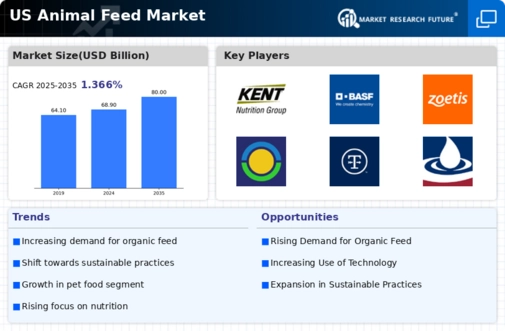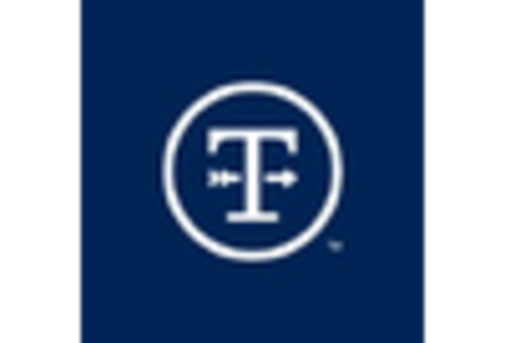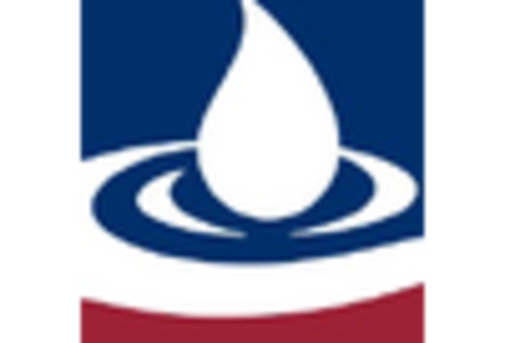The probiotics animal feed market is currently characterized by a dynamic competitive landscape, driven by increasing demand for sustainable and health-oriented animal nutrition solutions. Key players such as Cargill (US), Archer Daniels Midland Company (US), and Alltech (US) are actively shaping the market through strategic initiatives focused on innovation and regional expansion. Cargill (US) emphasizes its commitment to sustainability, leveraging its extensive supply chain to enhance product offerings. Meanwhile, Archer Daniels Midland Company (US) is investing in digital transformation to optimize its operations and improve customer engagement. Alltech (US) continues to innovate with its product lines, focusing on natural ingredients that promote animal health, thereby enhancing its competitive positioning.
The market structure appears moderately fragmented, with several players vying for market share. Key business tactics include localizing manufacturing to reduce costs and optimize supply chains, which is crucial in maintaining competitive pricing. The collective influence of these major companies fosters a competitive environment where innovation and operational efficiency are paramount. As these companies adapt to market demands, their strategies are likely to influence smaller players and shape overall market dynamics.
In November 2025, Cargill (US) announced a partnership with a leading biotechnology firm to develop next-generation probiotics aimed at improving gut health in livestock. This strategic move is significant as it not only enhances Cargill's product portfolio but also positions the company at the forefront of innovation in animal nutrition. By integrating advanced biotechnology, Cargill (US) is likely to strengthen its market presence and appeal to a growing segment of health-conscious consumers.
In October 2025, Alltech (US) launched a new line of probiotic supplements specifically designed for poultry, which aims to enhance feed efficiency and overall flock health. This initiative reflects Alltech's ongoing commitment to research and development, suggesting that the company is keen on addressing specific market needs. The introduction of targeted products may provide Alltech (US) with a competitive edge, particularly in the poultry sector, where demand for high-quality feed solutions is on the rise.
In September 2025, Archer Daniels Midland Company (US) expanded its production capabilities by investing in a new facility dedicated to the manufacturing of probiotic animal feed. This expansion is indicative of the company's strategy to meet increasing market demand and enhance its operational capacity. By bolstering its production capabilities, Archer Daniels Midland Company (US) is likely to improve its supply chain efficiency and respond more effectively to customer needs.
As of December 2025, current trends in the probiotics animal feed market include a pronounced shift towards digitalization, sustainability, and the integration of artificial intelligence in production processes. Strategic alliances among key players are increasingly shaping the competitive landscape, fostering innovation and collaboration. The evolution of competitive differentiation appears to be moving away from price-based competition towards a focus on technological advancements, product innovation, and supply chain reliability. This shift suggests that companies that prioritize these aspects may be better positioned to thrive in the future.






















Leave a Comment